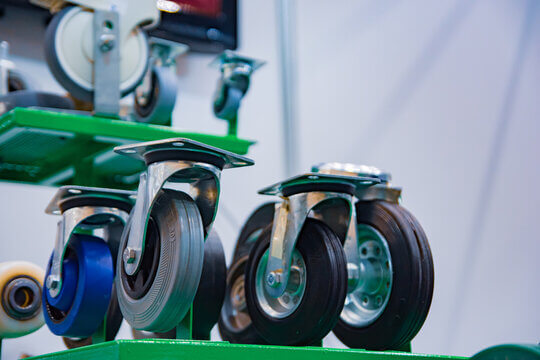Bringing Industrial Mobility to New Heights
In the pursuit of operational excellence, industries continuously seek innovative solutions to overcome the challenges of material transport. Casters have been an integral part of this quest, allowing for the fluid movement of heavy loads across facilities, which can range from machinery to stock. With the introduction of suspension casters, the threshold for what can be transported securely and efficiently has been raised. The capacity to endure load shocks over various terrain types without sacrificing stability has rendered these casters a staple for businesses aiming to bolster their productivity and streamline their operational workflows.
Characteristics of Premium Casters
High-quality casters are defined by a combination of strength, durability, and strategic design that fulfills the specific needs of different industrial applications. They come in various sizes and materials, each suitable for particular environments and tasks. For example, a hospital’s medical equipment casters would differ radically from those used in a factory or automotive assembly line. Premium casters are expected to carry heavy loads while preserving ease of movement, minimalizing manual labor, and enhancing overall workflow efficiency. They should be resilient enough to withstand daily usage over extended periods without significant wear and tear.
Caster Applications Across Industries
Diverse industrial applications necessitate casters with a wide range of specifications. In healthcare, for example, casters are critical components for medical devices and hospital beds, necessitating silent operation and ease of maneuvering. In manufacturing and construction, casters must handle heavier loads and be durable enough to tolerate harsh working conditions and debris-laden floors. The aerospace industry employs heavy-duty casters capable of supporting the considerable weight of airplane parts, demanding precision and reliability. The adaptability of casters to varied industrial contexts demonstrates their integral role in the cohesive operation of manufacturing, distribution, and service sectors.
Customization: Tailoring Solutions to Unique Demands
Customized casters respond to the distinct challenges posed by various industries and are designed to provide solutions that generic products might not offer. These casters address specific requirements with custom load-bearing, roll resistance, wheel material, and environmental resilience configurations. Considering floor conditions, temperature range, and load type is crucial for optimal caster performance. Custom solutions bridge the gap between the standard product offerings and the nuanced needs of intricate industrial applications. They allow businesses to tweak and optimize every aspect of their operation, including material transport.
Ensuring Safety and Efficiency
Ultimately, safety and efficiency are the ceilings of productivity in any industrial operation. Organizations can achieve significant improvements in their material handling processes by implementing a well-constructed plan for caster deployment. Including proper selection, usage, and timely maintenance. Educating staff on caster safety practices and conducting regular inspections to identify and replace worn components are essential in preventing workplace injuries and accidents.
Future Trends in Caster Technology
With the continuous advancements in technology. The future of caster manufacturing looks towards enhanced designs that offer excellent durability and ease of use. Bright casters equipped with sensors for monitoring wear. Automated systems for adjusting to varying loads are just the beginning of what could evolve in the coming years. The inclusion of more ergonomically designed options promises to reduce the physical strain on users. Contributing to a safer and more comfortable workplace.
Furthermore, the trend toward sustainability forces caster makers to investigate recycled materials and more environmentally friendly production techniques. Supporting international initiatives to reduce environmental effects. These advancements aim to increase casters’ functional lifespan. Ensure they can be disposed of or recycled without harming the environment. Read more exciting articles on Apnewsday

 Education7 months ago
Education7 months ago
 Health7 months ago
Health7 months ago
 Game7 months ago
Game7 months ago
 Business7 months ago
Business7 months ago
 Tech7 months ago
Tech7 months ago
 Travel7 months ago
Travel7 months ago
 Entertainment7 months ago
Entertainment7 months ago
 Tech7 months ago
Tech7 months ago










